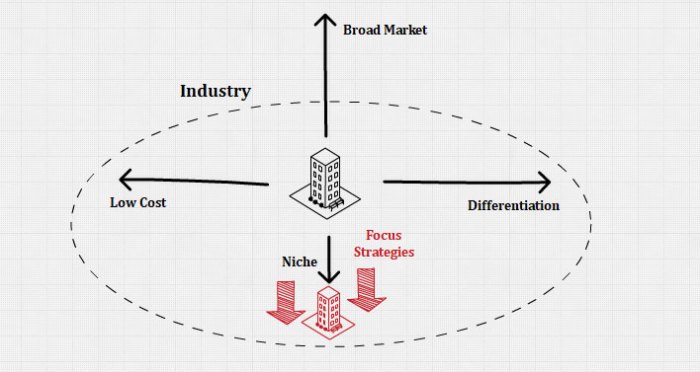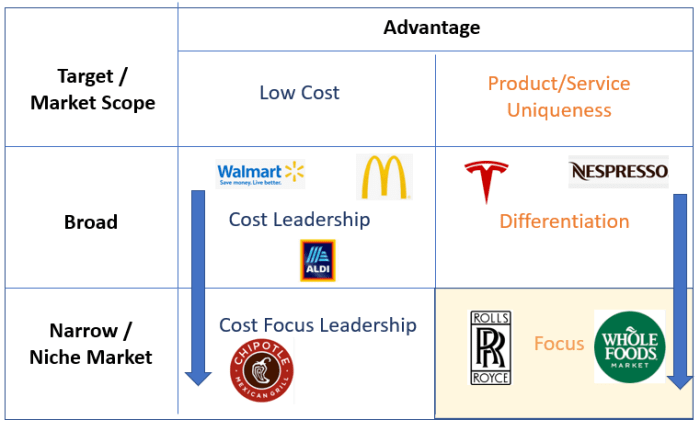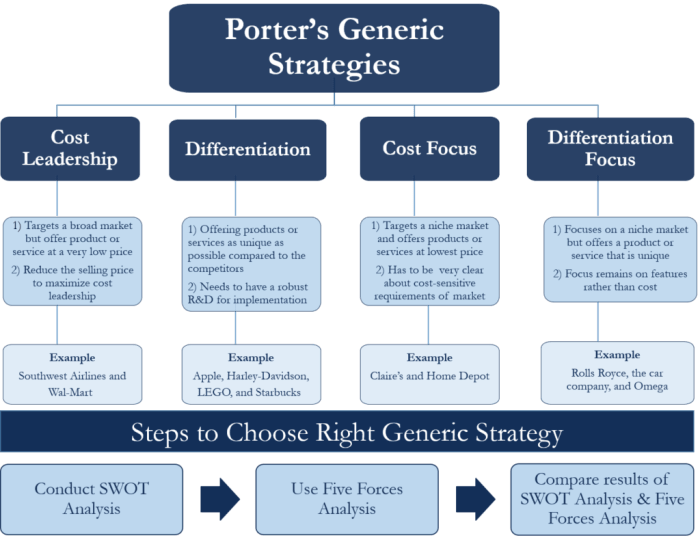Companies that use a focus strategy have narrow buyer groups, a concept that has gained prominence in the business world. This strategy involves targeting specific customer segments with tailored products and services, leading to increased market share and profitability. This introductory paragraph provides an overview of the topic, highlighting the key elements of a focus strategy and its potential benefits.
The subsequent paragraphs delve deeper into the advantages and disadvantages of a focus strategy, exploring the factors that contribute to its success or failure. The discussion also encompasses the implementation of a focus strategy, emphasizing the importance of market segmentation and product development.
Additionally, the role of marketing and customer service in supporting a focus strategy is examined, providing practical insights for businesses seeking to adopt this approach.
Definition of Focus Strategy: Companies That Use A Focus Strategy Have Narrow Buyer Groups

A focus strategy is a business strategy in which a company targets a specific buyer group or market segment. Companies that adopt a focus strategy aim to become the market leader in a particular niche by catering to the specific needs of their target market.
Characteristics of companies that adopt a focus strategy include:
- A narrow target market
- A deep understanding of the target market’s needs
- A product or service that is tailored to the target market’s specific needs
- A strong brand identity that is associated with the target market
Advantages of Focus Strategy

There are several advantages to using a focus strategy for companies. These advantages include:
- Increased market share: By focusing on a specific target market, companies can increase their market share in that segment.
- Improved profitability: By understanding the needs of their target market, companies can develop products and services that are in high demand, leading to improved profitability.
- Stronger brand identity: By focusing on a specific target market, companies can build a stronger brand identity that is associated with that market.
Examples of successful companies that have implemented focus strategies include:
- Tesla: Tesla focuses on the luxury electric car market.
- Starbucks: Starbucks focuses on the premium coffee market.
- Nike: Nike focuses on the athletic footwear and apparel market.
Disadvantages of Focus Strategy

There are also some potential drawbacks to a focus strategy. These drawbacks include:
- Limited growth potential: By focusing on a narrow target market, companies may limit their growth potential.
- Increased risk: By focusing on a specific target market, companies may be more vulnerable to changes in that market.
- Competition: Companies that adopt a focus strategy may face intense competition from other companies that are also targeting the same market.
Implementation of Focus Strategy

Companies can successfully implement a focus strategy by following these steps:
- Identify a target market: The first step is to identify a target market that the company can focus on.
- Develop a deep understanding of the target market: Once a target market has been identified, the company needs to develop a deep understanding of the market’s needs.
- Develop a product or service that meets the target market’s needs: The company needs to develop a product or service that is tailored to the specific needs of the target market.
- Build a strong brand identity: The company needs to build a strong brand identity that is associated with the target market.
- Monitor the target market: The company needs to monitor the target market to ensure that its needs are still being met.
Commonly Asked Questions
What are the key characteristics of companies that use a focus strategy?
Companies that use a focus strategy typically have a narrow product line, a specific target market, and a deep understanding of their customers’ needs.
What are the advantages of using a focus strategy?
Focus strategies can lead to increased market share, higher profitability, and stronger customer relationships.
What are the disadvantages of using a focus strategy?
Focus strategies can be risky if the target market is too narrow or if the company fails to adapt to changing market conditions.